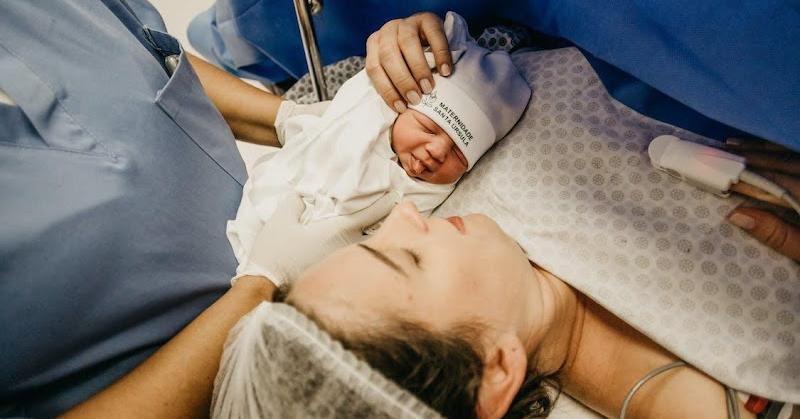Welcoming new life into the world should be a joyous occasion for parents. However, some complications in childbirth can significantly impact the health of both the mother and the newborn. That’s why you have to learn about the problems that can arise during childbirth, i.e., birth injuries. In this guide, we’ll explore key information about birth injuries, including their causes, symptoms, and the legal aspects involved.
This info will empower expecting parents to navigate the complexities associated with birth injuries. Now, go through this guide carefully so you can make informed decisions about your baby’s future:
- Birth injuries aren’t that rare today
Fortunately, the prevalence of birth injuries has decreased over the last few decades. It’s estimated that 7 out of 1,000 childbirths [a]result in birth injuries. Male babies are more vulnerable than girl babies to birth injuries. Considering that some 3.66 million kids are born in the United States daily, some 25,000 of these newborns sustain some type of birth injury, a cause of concern for many parents-to-be right now. So, keep these eye-opening statistics in mind if you’re expecting a child.
- Most birth injuries are preventable
You’d be happy to learn that most birth injuries are preventable. Tracking the baby’s vital signs properly during labor and performing an ultrasound to monitor fetal development are some ways to prevent a birth injury. In some cases, however, birth injuries stem from medical malpractice. For instance, using forceps to deliver the baby or not performing a C-section when necessary may lead to a birth injury.
You can take legal action against the negligent party and claim birth injury settlements if you think the baby’s birth injury was caused by medical malpractice. You must prove liability and damages since malpractice lawsuits come under tort law. So, contact a birth injury lawyer for a case review.
- Recognize the names of some injuries
Different recognizable birth injuries exist today. So, learning about them can help you easily overcome the problems that arise with them. For instance, cerebral palsy affects 1 out of 345 kids[b], caused by the brain’s abnormal development (or oxygen deprivation). It’s the most common birth injury and begets most birth injury lawsuits nationwide. Some other popular birth injuries include:
- Bone fractures
- Facial paralysis
- Injuries to the baby’s spinal cord
- Brachial plexus palsy (the arm gets paralyzed)
- Caput succedaneum (the baby’s scalp gets swollen)
- Learn the symptoms of birth injuries
Monitor your newborn closely as they grow up to ensure they reach the developmental milestones expected for their age. Some newborns display telltale symptoms of birth injuries just hours after their birth. Some warning signs of birth injuries, such as fractures or weak reflexes, are obvious, while others are developed later in life, such as speech problems or learning impairment.
Some other noteworthy red flags include the following symptoms:
- Seizures
- Light sensitivity
- Constant drooling
- Spasms or writhing
- Curled hands or bent limbs
- Difficulty sucking/swallowing
- Difficulty eating, breathing, or excreting
- A birth injury can have lasting effects
While some birth injuries heal on their own, others may have long-lasting effects on your child.
For instance, minor perineal tears get better without any treatment required. Deeper grazes require a surgical procedure. But severe injuries like cerebral palsy are incurable, causing lifelong disabilities for the newborn. Babies with cerebral palsy require intensive care to improve their quality of life. In some even more serious cases, the child can live independently and will always depend on a caregiver for even the necessities of life. You must realize this dark reality about birth injuries.
- Rehabilitation can help your newborn
Proper treatment and caregiving can help your baby overcome the difficulties posed by birth injuries.
Consult healthcare providers specializing in this field – such as cerebral palsy doctors – to treat your kid and create a personalized treatment plan for them. Don’t forget that every child’s path to recovery is different, and your baby may progress at a different rate. Some birth injuries need surgery to correct physical anomalies, while others require medication for pain management.
- Treating birth injuries Can Be expensive
The average lifetime cost of birth injury treatment can easily exceed a million. Data shows that caring for a child with cerebral palsy costs ten times more than for a healthy newborn. And it’s not just the baby’s treatment and rehabilitation that cost a lot of money; parents also have to modify their homes to help their kids live a normal, healthy life. Considering all these expenses associated with birth injuries, you can easily realize why seeking legal help to apply for compensation is so important.
- Don’t forget to focus on your health
Caring for a child with birth injuries can be an emotional rollercoaster for parents. It’s common for the parents of a disabled child to experience burnout, [c]and they’re also more vulnerable to depression. Many parents feel guilty or somehow responsible for their children’s condition (even if the injuries were just a result of medical malpractice). Watching one’s newborn suffering from a lifelong, incurable condition can be distressing. Thus, you should focus on self-care as well and seek counseling options.
Licensed therapists offer a safe space where you can be vulnerable, express your feelings, and find the right way to heal. Contact support groups created by other parents of kids with birth injuries. They can share careful insights into how to overcome your grief and cater to your kid’s rehabilitation.
Conclusion
This guide serves as a factsheet on birth injuries, helping parents-to-be navigate potential challenges and advocate for their children’s well-being. Learn about what causes birth injuries in newborns and what role medical malpractice plays in this situation. This guide also explains how to cope with birth injuries, pursue justice against the doctor’s negligence, and get proper treatment/rehabilitation for your newborn.
[a]https://www.childbirthinjuries.com/legal/statistics/
[b]https://www.cdc.gov/ncbddd/cp/features/cerebral-palsy-11-things.html
[c]https://www.ncbi.nlm.nih.gov/pmc/articles/PMC8835161/
